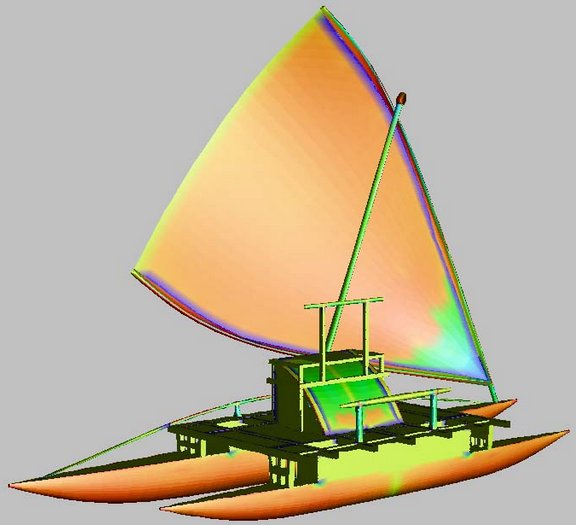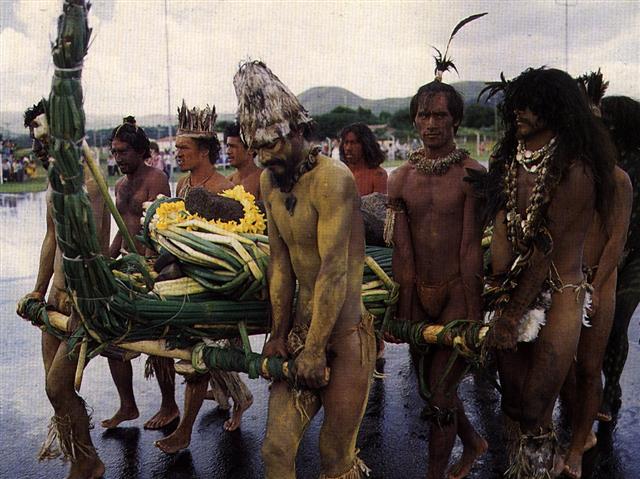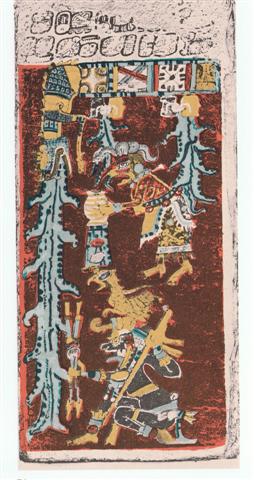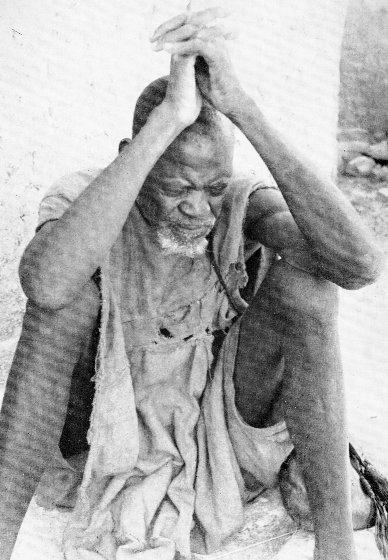There were 39 (= 41 - ADHIL - MIRA) varieties of yam roots (uhi) brought onboard the royal canoe. And 39 + 49 = 88 (BETELGEUZE).
However, before the yam roots were brought onboard there was a stone figure (moai maea) who had to be picked up: ... Teke said to Oti, 'When you see [ana ui mai koe] that Maeha is coming out of the house and is walking [oho ki vaenga] over to the yam plantation, then two [hokorua, 2] of you shall look around, enter [uru] into the house, and take [too] the stone figure (moai maea) that is lying there. (Her) name is Te Takapau.' After Maeha and Teke had reached the middle [ki vaenga] of the yam plantation, Oti and Parahenga [Bara henga] went into the house [ki roto ki te hare], picked up [he too mai] the figure, put her on a stretcher (rango) and carried her on board the canoe. (There) they left her ... [E:61] Para. 1. Spleen. 2. Ripe; to ripen: maîka para, ripe bananas; para rautí said of ripe bananas the peel of which has stayed green. 3. To start rotting (of wood and other materials): ku-para-á te miro, the wood has rotted. 4. A moss found in abundance in the watery bottom of Rano Kau, which has very long roots laden with water. Fishermen used to take quantities of them, wrapped in banana leaves, to alleviate their thirst. Vanaga. 1. A short club T. Mq.: parahua, a paddle-shaped club. 2. To become bad, to soften, to decay, to rot, to ripen, old, used up.; niho para, decayed teeth; para rakerake, overripe; tae para, unripe. Hakapara, to mellow. P Mgv.: para, ripe, mature; akapara, to ripen, to improve morally. Mq.: paá, ripe, soft, overripe, rotten, old, used up. Ta.: para, ripe. 3. Spleen. Churchill. Hega. Hegahega, reddish, ruddy. Hehega, to dawn; ki hehega mai te raá, when the sun rises. Vanaga. Hehegaraa, sunrise. PS Sa.: sesega, to be dazzled as by the sun. Fu.: sega, the beginning of daybreak. Niuē: hegahega, the red light or rays at sunset. Viti: sesē, to dawn. Churchill.
The name of the stone statue lying in the house of Maeha, viz. Te Takapau, should be interpreted as the end (pau) of the cycle (taka) - this we can deduce from Hanga Te Pau (the landing site of Ira) and from Fakataka (Haka-taka = to complete a cycle) who gave birth to a son (completed a cycle) on the sweet water pools of the reef. Pau. 1. To run out (food, water): ekó pau te kai, te vai, is said when there is an abundance of food or water, and there is no fear of running out. Puna pau, a small natural well near the quarry where the 'hats' (pukao) were made; it was so called because only a little water could be drawn from it every day and it ran dry very soon. 2. Va'e pau, clubfoot. Paupau: Curved. Vanaga. 1. Hakapau, to pierce (cf. takapau, to thrust into). Pau.: pau, a cut, a wound, bruised, black and blue. 2. Resin. Mq.: epau, resin. Ta.: tepau, gum, pitch, resin. (Paupau) Hakapaupau, grimace, ironry, to grin. 3. Paura (powder), gunpowder. 4. Pau.: paupau, breathless. Ta.: paupau, id. 5. Ta.: pau, consumed, expended. Sa.: pau, to come to an end. Ma.: pau, finished. 6. Ta.: pau, to wet one another. Mq.: pau, to moisten. Churchill. Paua or pāua is the Māori name given to three species of large edible sea snails, marine gastropod molluscs which belong to the family Haliotidae (genus Haliotis), known in the USA as abalone, and in the UK as ormer shells ... Wikipedia. Taka, takataka. Circle; to form circles, to gather, to get together (of people). Vanaga. 1. A dredge. P Mgv.: akataka, to fish all day or all night with the line, to throw the fishing line here and there. This can only apply to some sort of net used in fishing. We find in Samoa ta'ā a small fishing line, Tonga taka the short line attached to fish hooks, Futuna taka-taka a fishing party of women in the reef pools (net), Maori takā the thread by which the fishhook is fastened to the line, Hawaii kaa in the same sense, Marquesas takako a badly spun thread, Mangareva takara a thread for fastening the bait on the hook. 2. Ruddy. 3. Wheel, arch; takataka, ball, spherical, round, circle, oval, to roll in a circle, wheel, circular piece of wood, around; miro takataka, bush; haga takataka, to disjoin; hakatakataka, to round, to concentrate. P Pau.: fakatakataka, to whirl around. Mq.: taka, to gird. Ta.: taa, circular piece which connects the frame of a house. Churchill. Takai, a curl, to tie; takaikai, to lace up; takaitakai, to coil. P Pau.: takai, a ball, to tie. Mgv.: takai, a circle, ring, hoop, to go around a thing. Mq.: takai, to voyage around. Ta.: taai, to make into a ball, to attach. Churchill.
The old cycle had been counted down to 0 and was now washed away by the waves rolling in.
…to enter a war canoe from either the stern or the prow was equivalent to a 'change of state or death'. Instead, the warrior had to cross the threshold of the side-strakes as a ritual entry into the body of his ancestor as represented by the canoe. The hull of the canoe was regarded as the backbone of their chief. In laments for dead chiefs, the deceased are often compared to broken canoes awash in the surf ... The Chinese had their 13th station at Markab Pegasi (*349.5) and their 14th at Algenib Pegasi (*1.8), which means Sirrah (*0.5) was inside the Pegasus Square.
The stone statue Te Takapau was inside the house of Meaha. And then there was the curious event of moving the feet: ... Teke went away and came to the house of Maeha [he tuu ki te hare o Maeha]. There he lay down (?) as though he were going to sleep that night. It grew dark [he po], and fifty men came to dig up the yams [ki te uhi keri]. They arrived [he tuu), dug out [he keri] the yam roots, and rubbed small pieces of them between their hands. Maeha heard something, namely the noise that the men made, and he said [he-ki mai mai te rua painga] from the other side (of the house) to Teke, 'Hey you! This is the first time that such a noise has been heard at night.' [he ki mai a Teke] Teke answered from his side (of the house) [mai toona painga], 'My feet have made the noise that you heard.' [he vae ooku tau hetu ena.a koe hakarongo ena] And he very carefully [koro iti] made a noise [hakahetu] with his feet [i toona vae] ... [E:59] Whenever something curious occurs in a myth this is intended to draw attention in order to convey meaning. The meaning in this case is certainly to connect the yam roots of Maeha with the days after 0h. Because here (at the reef) water changed into land and therefore the fins for swimming had to change to legs for walking: ... During his descent the ancestor still possessed the quality of a water spirit, and his body, though preserving its human appearance, owing to its being that of a regenerated man, was equipped with four flexible limbs like serpents after the pattern of the arms of the Great Nummo. The ground was rapidly approaching. The ancestor was still standing, his arms in front of him and the hammer and anvil hanging across his limbs. The shock of his final impact on the earth when he came to the end of the rainbow, scattered in a cloud of dust the animals, vegetables and men disposed on the steps. When calm was restored, the smith was still on the roof, standing erect facing towards the north, his tools still in the same position. But in the shock of landing the hammer and the anvil had broken his arms and legs at the level of elbows and knees, which he did not have before. He thus acquired the joints proper to the new human form, which was to spread over the earth and to devote itself to toil ... There were 10 days from Algenib Pegasi to the 15th Chinese station Legs:
And at Legs the date at the time of Bharani would (according to the calculations) have been day 50 counted from "January 1, which agrees with the number of men who came to dig up the yam roots of Maeha. In order to secure a correct intepretation the myths had to be redundant - several clues were given. There was a difference between the first 10 yam species and the following 3:
Ogotemmêli would have understood.
|
|||||||||||||||||||||||||||||||||||||||||||||||||||||||||||||||||||||||||||||||||||||||||||||||||||||||||||||||||||||||||||||||||||||||||||||||||||








